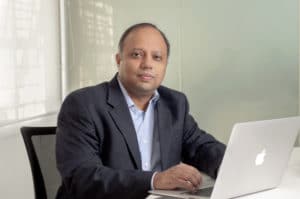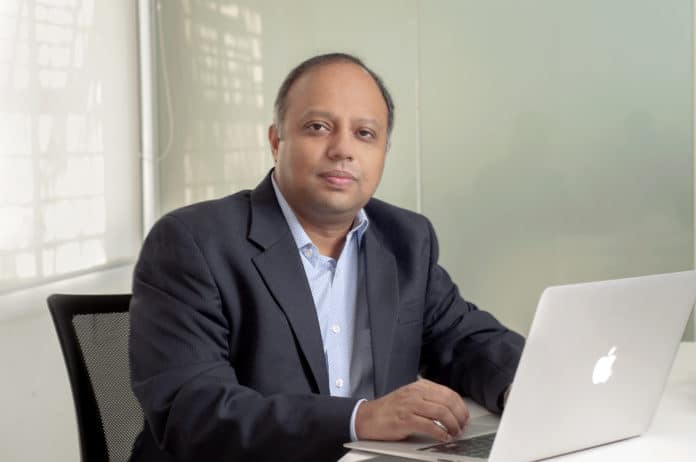Altizon, an industrial IoT solution provider has recently launched its Datonis IIoT product suite to address the productivity and maintenance challenges of its customers in their factories. Baishakhi Dutta of ProfitfromIoT.com speaks to Vinay Nathan, CEO, and co-founder of Altizon Systems to know more about how enterprises can leverage IIoT to optimise smart manufacturing practices.

Q) What would you say is the most popular purchase model among customers for IoT platforms right now?
I believe the industry has actively adopted cloud technologies and SaaS business models. There are certain pockets like aerospace where an on-premise one-time license model may be applicable, but more than 90 per cent of the market prefers a version of cloud strategy – be it public cloud or private to handle their security concerns and cost drivers.
Q) Do you think Indian SMEs have the business scale to invest in IIoT solutions and get an ROI?
If Indian SMEs can standardize operations to work with off-the-shelf software that captures a bulk of what they need, there is definitely scale and ROI to leverage. However, if they choose to build custom software that mimics their exact processes or has expansive needs then it is impractical for all stakeholders.
Q) What would be your suggestions to industrial customers for evaluating an IoT solution before investment?
It is very important for industrial customers to adopt an agile approach to IoT. Experiment quickly at a smaller scale, see the positive ROI from that activity and then scale for enhanced impact. In the first iteration, one can focus on a narrow function like productivity or quality in one facility to assess feasibility. Once that is proven, the speed of scaled adoption is vital for larger ROI and organisation wide impact.
Q) What are the key elements of security in an IIoT system?
Security is a fundamental aspect for every IoT product and solution. It is vital that all software is built from the ground up keeping security in mind. Security at each level of a software stack should prevent unauthorized access to data, assets and applications. All good software products factor in security from a compliance perspective and have live tooling to continuously monitor, flag and block abnormal behaviors.
Q) Where do industrial customers face most challenges in terms of securing their IIoT systems?
The key challenge is that industrial networks in manufacturing facilities may have old PCs and software that is not patched with the latest security updates. So IoT products at both Edge and the cloud have to implement multiple checks to ensure there are no breaches. Data, as it travels, requires to be encrypted end to end. Applications and users should have access to only those resources elements that is of need for them. An IT policy that incorporates all these elements is vital.
We have observed that many of the larger companies have sophisticated security policies in place and also have regular 3rd party audits. However as one winds down the value chain to smaller manufacturing companies some of these elements may be lacking.
Q) Tell us a little about your main offerings as an IIoT solution provider.
Altizon provides the Datonis platform that includes software products for Edge Computing, manufacturing data lake and a Manufacturing Intelligence Application Suite (MInt) to help industrial enterprises accelerate their smart factory, connected asset, and digital transformation initiatives.
Q) What are the main checkpoints for your customers before deploying your Datonis platform? Do you provide proof-of-concept to customers before finalizing the deployment?
The most critical first step for project success from a technical standpoint is having an OT data acquisition strategy in place. This forms an important first checkpoint in the deployment process.
Typically customers do a paid Proof-of-Value for a smaller footprint of a few machines and then scale their deployment.
Q) Do you provide only the software platform or the hardware components as well?
We are a pure software-only player. We partner with hardware vendors to enable the data acquisition layer.
Q) Is your platform purchase model a subscription-based deployment or upfront purchase or any other flexible model?
We provide all our products in a subscription model. In certain cases, we have additional incentives for outcomes. The Edge Compute products are a one time license. In general, we provide flexibility to customers with pay as you go models to help them scale costs as their needs expand. Large Enterprises also leverage our enterprise pricing model for big rollouts.
Q) What are your post-deployment customer support strategies?
Altizon provides 24×7 support for all its products globally via a shared resource pool. Our customer support teams also have a lot of tooling in place to do automated 24×7 monitoring of all systems globally be it on the edge or in our cloud infrastructure. We service customers and assets in 31 countries today. There is an established service level arrangement (SLA) that is used to address all exigencies that may occur. Some customers also opt for dedicated support models.
Q) Would you say IoT and M2M is a mandatory technology for electronics product makers to succeed today?
Yes. “Connected Products at birth” is an expectation from the customers today. It is a vital ingredient to customer experience in all walks of our life. An unconnected product is like the feature phones of the 90s that are no longer seen today.
Without a doubt, all manufacturing also needs to have a digital footprint both in terms of machine data being captured for analysis directly from the production systems, and, in terms of digitization of all manual processes on the shop floor. A digital DNA needs to be imbibed across the organisation to make this transition happen.
Q) Do you see open-source technology playing important roles in IoT programs?
Open source technology has democratized access to advanced technologies like IoT, machine learning for the entire world. They have enabled products and solutions to be built and delivered globally at a fraction of the cost of what it would take even a decade ago. All major technology vendors in IoT space have incorporated open source technologies into their tech stacks to deliver products and services to customers.
Q) What is your advice for IoT marketers today?
I would request them to cut out the hype and focus on business impact. Sometimes marketers tend to make IoT complex and unrealistic. This hurts end customers and the overall IoT market from developing faster. It is only when marketers have technical knowhow that they can ensure they don’t cross that line from being audacious to being naïve.
Q) What would be your tip to IoT entrepreneurs today?
There is a lot to innovate in the IoT space. Business models, technology and use cases are still evolving globally. So again keeping it to one suggestion; stay focused on the business value for your customers and build your organisation around providing it.
Q) Do you think IoT has reached the level of adoption as much as its popularity among tech companies?
To quote an often-used paradigm “IoT is an idea whose time has come”. Today the tech industry on both consumer and industrial side is heavily investing in building IoT enabled products and solutions. Major acquisitions by larger players like Google (Fitbit) validate this.
Q) What do you think were India’s achievements in the industrial IoT landscape in the last 2 years? What are the key drivers for improving IIoT adoption?
India has gone from a follower to making big strides to providing leading use cases for the Industrial IoT space. Several industrial majors have launched their digital initiatives through a combination of boosting in-house talent, acquiring as well as investing in startups.
Operational efficiency, KPI enhancement for productivity, quality, maintenance, traceability, and energy are the main drivers for IIoT adoption in India. These are in sync with the ongoing global trends.
Q) What is your view on the standardization and regularized IoT protocols – how far has it been shaped?
While all modern machines built in the last decade or so have active support for standard protocols like OPC, MTConnect and various bus protocols, there is still a huge legacy infrastructure that doesn’t do so. This requires a deeper look at ways to connect legacy machines and drive relevant data. Adapters are very heavily used and in some cases, additional sensors are fitted. Productivity typically is an easier first pass before one enables functionality for quality and maintenance.
Q) Is Altizon playing any part in addressing these challenges?
By virtue of Altizon experience working with large and small customers globally over the past 6 years, we have a successful track record in dealing with these challenges. Altizon Edge product lines have been built from the ground up to deal with legacy infrastructure and the huge diversity of industrial machines. Our Manufacturing Intelligence application suite Mint is built to help organizations have an immediate starting point for ROI and then add more layers to build predictive capabilities.
Q) You have recently partnered with Aeris to deliver IIoT solutions. Who do you cater to and how does the partnership work?
Our model has been to work closely with system integrators to help deploy the product. We work with about a dozen small and large SI firms globally. They use the Datonis platform and applications to accelerate customer’s digital transformation initiatives.
Q) Any success stories of these partnerships in India?
We have a very global partnership program with close to 30 System Integrators working with us. These include global majors like Deloitte, Bain, Accenture and also specialised local automation players like Microlink in India or Matrix in the US. We have several public case studies with partners and all the names I mentioned above have been successful for us.
Q) What challenges do you face in India as an IIoT solution provider? How are you addressing it?
Indian market being a very value-conscious market presents its own unique challenges for IIoT. The industrial world here has a lot of legacy machinery still in use. We have turned this into our strength by having learnt on this playground in the early years and then being able to productise that know how to take it global.










